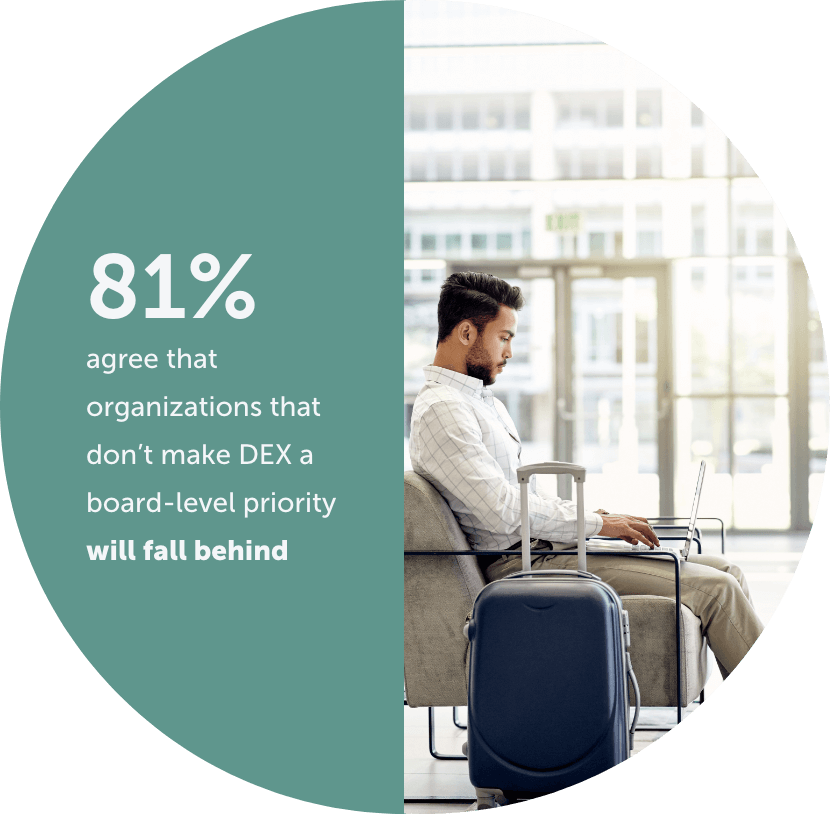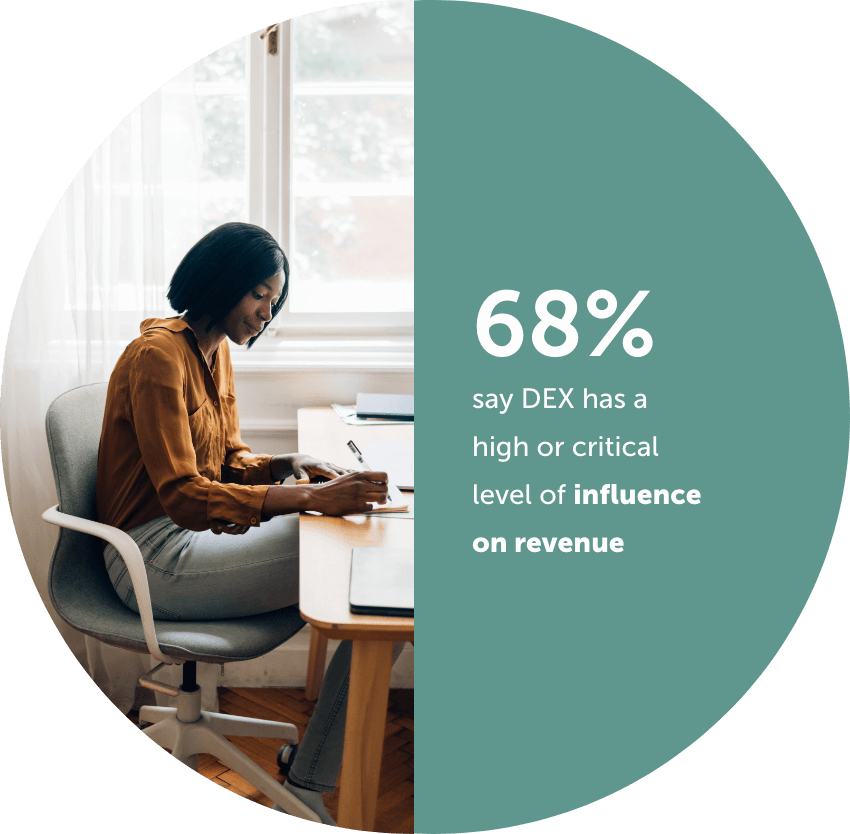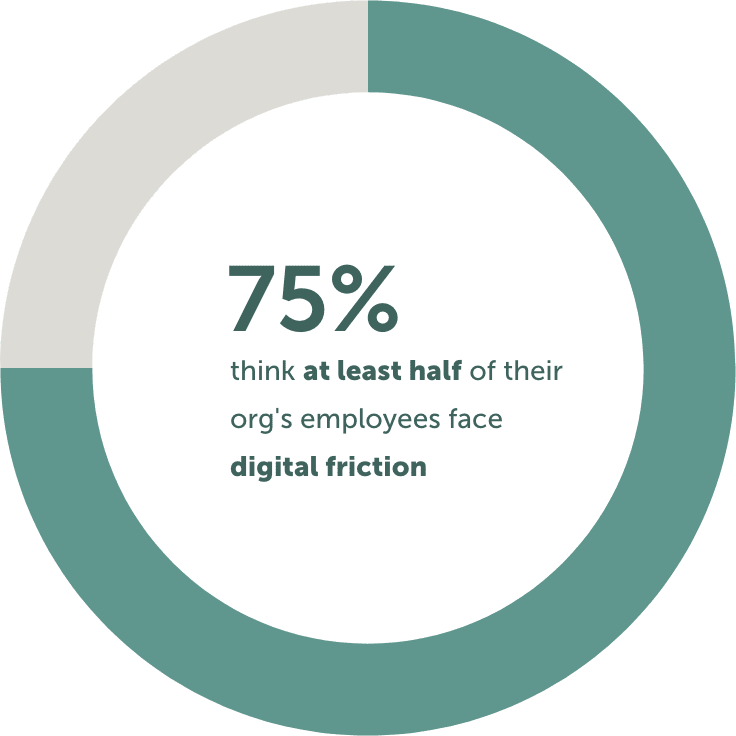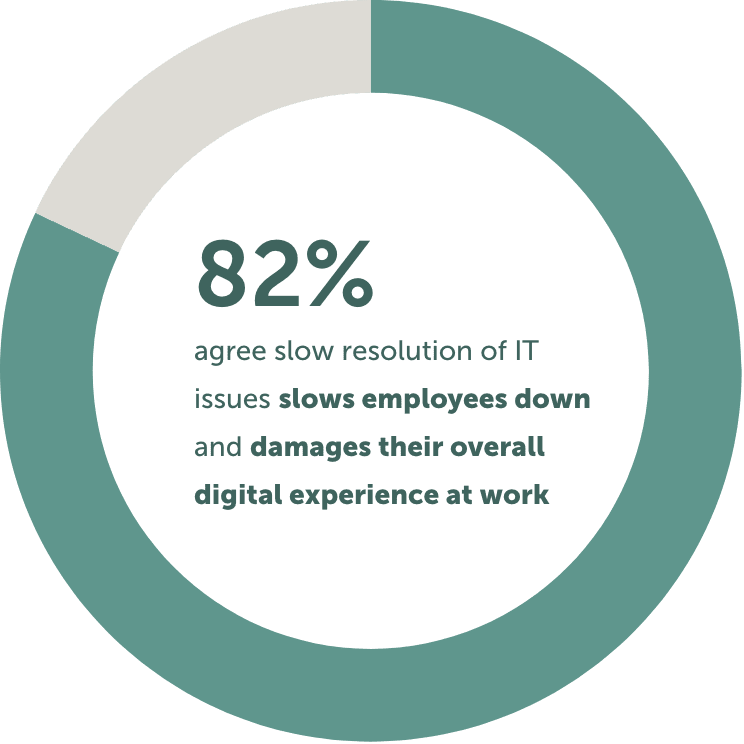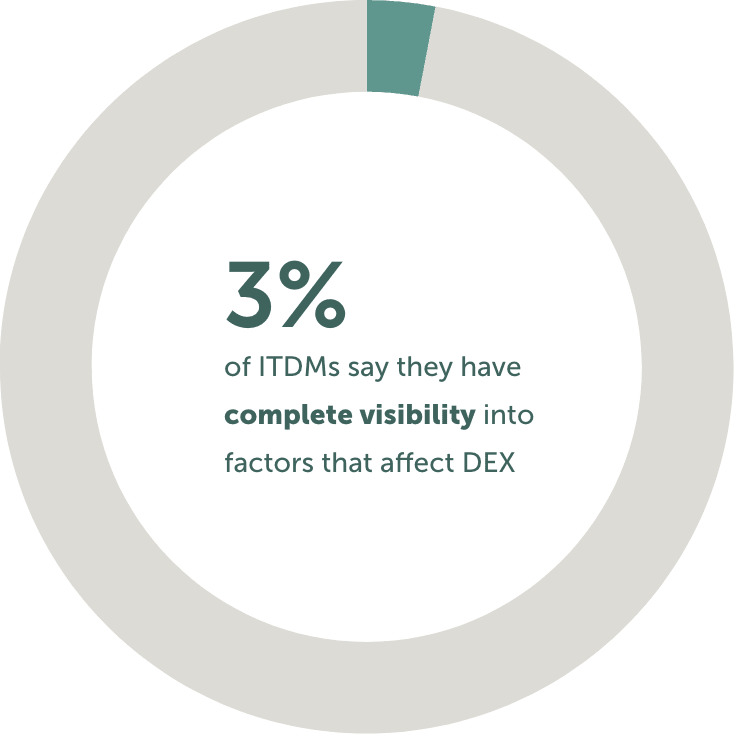What started as hybrid and remote work experiments have matured into permanent norms. 2020 was the year enterprises experimented with remote and hybrid work and 2021 saw the maturity of these models into permanent norms for millions. But now, as we reach the halfway point of 2022, it’s time to check in on the status of this tremendous workplace revolution and assess the state of digital employee experience (DEX) in the enterprise.
Our new research reveals how far enterprises have come in their digital employee experience (DEX) journeys—and where they need to quickly close gaps. We surveyed 200 IT decision-makers (ITDMs) and knowledge workers in the US and UK at enterprises with 5,000+ employees.
Let’s take a high-level look at some of the key findings and consider the progress, patterns, and gaps identified.
Ready to move from good to great
Last year the likes of Gartner, Forrester, and many other experts, spoke about the importance of DEX in the modern workplace and enterprises listened. Our 2022 research shows a whopping 91% of respondents say their organization has a strategy already in place – or is in the process of implementing one – designed to improve the employee experience.
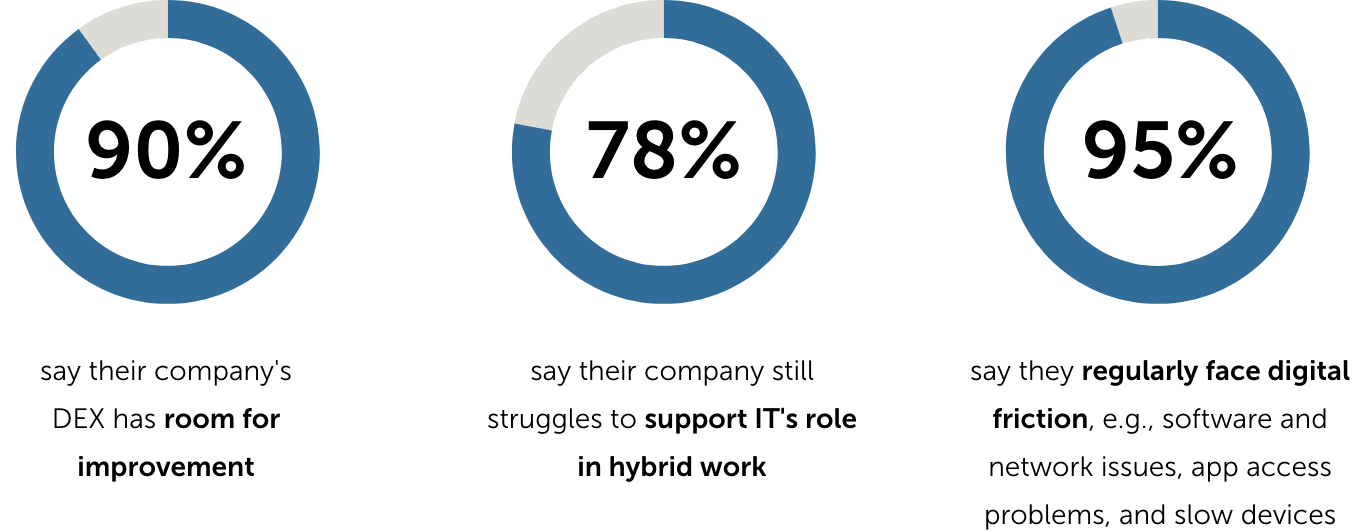
However, despite most respondents recognizing the importance of DEX as a key consideration in digital transformation (80%), almost everyone surveyed indicates that there is still room to improve when it comes to digital experiences (90%). Enterprises need to focus on supporting IT in hybrid work and address digital friction challenges to move from good to great.
DEX should be a board-level priority
Indeed, most enterprises have embraced DEX as a priority and done a respectable job implementing initial strategies. 74% of knowledge workers and 62% of ITDMs say their companies have fully implemented DEX strategies.
Promisingly,
our research reveals that there is a consensus among ITDMs and knowledge workers alike that DEX needs to be a priority for everyone, especially board-level, as it could be the difference between overtaking or falling behind the competition.
DEX affects everyone and everything
No, really! It’s no surprise that professionals believe DEX needs to be a board-level priority when it’s clear that it influences everything from employee retention to business revenue.
The result of a poor employee experience could mean more than just a negative Glassdoor review, it could impact the operational efficiency and go-to-market speed. This is in addition to the link between DEX and workplace happiness that most respondents identify (90%) – and as enterprises struggle with recruitment challenges, it’s important to keep staff content.
Digital friction is way too common
Our research highlights a key challenge to successful DEX is digital friction. The move to hybrid work has intensified existing struggles with software, connectivity, access, and hardware.
Only a small minority of respondents suggest that their enterprise has escaped digital friction completely. More than one-third of respondents indicate that the average employee faces application or software-related IT disruption either daily or multiple times per week (38%).
Think your employees want faster IT remediation?
Think again. So, what do they want? Proactive remediation.
While 33% of knowledge workers feel that IT is mostly proactive, 75% of all respondents say fast resolution of issues by IT is no longer good enough. Instead, issues need to be fixed before employees even become aware of them.
Time to work smarter, not harder
With only 27% of respondents describing their IT department’s DEX work as “excellent”, there’s major room for improvement. But where to start?
Help IT to work smarter as they support the evolving hybrid workplace. Providing them with tools for visibility, automation, and sentiment analysis.
Disconnected priorities
Our research shows some gaps between the areas of DEX that knowledge workers want IT to prioritize over the next 18 months and actual ITDM DEX priorities.
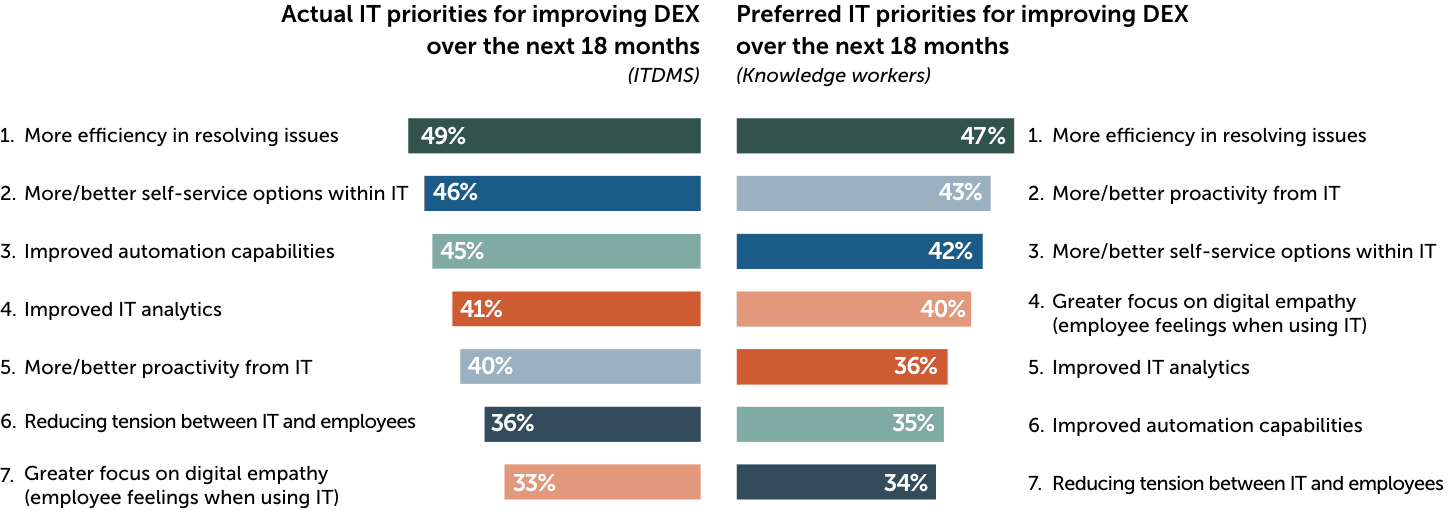
Whilst both groups place “More efficiency in resolving issues” in the #1 spot, knowledge workers’ #2 priority is “More/better proactivity from IT,” which falls to #5 on the list of ITDM priorities.
In the upcoming weeks we’ll take a deeper dive into some of the report’s key findings and explore these topics in more detail.
To learn more about how far enterprises have come in their DEX journeys – and where they need to quickly lose gaps – download the full report today!





